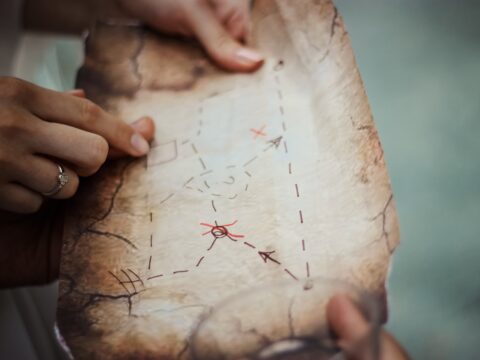Welcome to week 4 of Cybersecurity Awareness Month!
This is it! This is the last week to participate in the Virtual Scavenger Hunt (VSH)! I hope you have all successfully advanced to the fourth and final week, but if not, there are some clues later in the article to help you along. If you haven’t yet started, you still can, giving you a chance to win the Monster Isport Ear Buds Monster Clarity 102 AirLinks Wireless Ear Buds. Head over to the VSH start page (link at the bottom of the article, to not distract you from the main topics).
Security Awareness Training
An important part of equipping the Berry community to #BeCyberSmart is security awareness training. We’ve used security awareness training for specific groups here at the college for a couple of years now, but our goal is to expand our training platform to allow everyone to access the same training. One way we are working toward our goal is investing in a brand new training platform to replace the one we were using.
This new platform will eventually allow us to offer the same training to everyone, with the presentation tweaked appropriately for each part of our community – faculty, staff and students. More details will be sent as we roll out the new platform. If you are required to take security awareness training for your campus job, you’ll soon see it in your MyApps portal at https://myapps.berry.edu. Hopefully, if we complete the expansion of the system in a few months, everyone will see it in the MyApps portal.
You also have the option to request security awareness training. Once the system is live, you’ll receive information on how to request that training. It will cover a variety of topics, including how to pick a good password (or 100 good passwords), password managers, how to spot phishing emails and other social engineering attempts, which will protect you and the college, and how to secure your accounts and devices.
The Future of Connected Devices
The future is all about connected devices. As mentioned in last week’s article, Internet of Things (IoT) devices include watches, shoes, and healthcare devices. We also have connected toasters, coffee makers, refrigerators, TVs, and doorbells. The IoT devices market is expected to reach $1.1 trillion by 2026 according to Fortune Business Insights. Who knows what we will have connected by that time?
In development right now are everything from smart contact lenses to smart roads, all of which must be connected to the Internet to work. The estimated number of devices connecting to the network by 2025 is well over 75 billion. One of the most important technologies to facilitate this is 5G networking. This new networking paradigm will enable this massive collection of devices to connect to each other and to us.
It’s an exciting time, but there is one fact that we need to understand as we connect “everything” to the network. Once a toaster is made “smart” and connected to the network, it is technically no longer a toaster. It is a computer that can also toast our bread and bagels. That means it must be securely connected to the network, kept up to date, and managed in some way. That puts a burden on everyone to #BeCyberSmart and understand the rewards and risks of connected devices.
Other Stuff
If you missed the Virtual LunchITS last week but want to learn more about how to spot phishing emails, it will be repeated in November, so check the Events calendar on this site to find out when. Like the previous LunchITS, it will be held over Zoom, will last under an hour and will give you a definite edge in spotting phishing emails. I encourage you to sign up and attend. You can do that right in the event. Just click on it in the Event calendar and fill out an RSVP. There is no cost, but to make the Zoom meeting secure, you must request access to the LunchITS so I can send you the link and the password.
Also, remember that the Office of Information Technology encourages you to sign of for Multi-Factor Authentication (MFA). This will add an additional layer of security to your Berry account. You can read about it at this page on the main Berry website. Email computing@berry.edu to request it.
OK, it’s time to throw some hints to those of you who can’t seem to make your Week 3 Virtual Scavenger Hunt answers get you to week 4.
For the first question – A common name for the answer to question one is “the mob”. Also, the DBIR is available at this URL – https://enterprise.verizon.com/resources/reports/dbir/
For the second question – The answer can be found right under the “Cut to the chase” heading.
For the third question – The answer is eight letters long.
For the fourth question – Scroll most of the way through the article to find this answer. It’s an “i” thing.
For the fifth question – The answer is precise to two digits past the decimal point. It’s also less than 6, but more than 5…
IMPORTANT: You don’t have to resubmit your answers on the week 3 form, but these clues should help you get the correct URL for week 4 of the scavenger hunt.
If you haven’t started the scavenger hunt, here is the start page. You have until 5PM on October 30th to complete the hunt. Good luck and happy hunting!
Virtual Scavenger Hunt Start Page

 CAM Week 4 – Security Awareness Training and The Future of Connected Devices
CAM Week 4 – Security Awareness Training and The Future of Connected Devices




 CAM 2023 Week 4 – Update Your Software!
CAM 2023 Week 4 – Update Your Software!